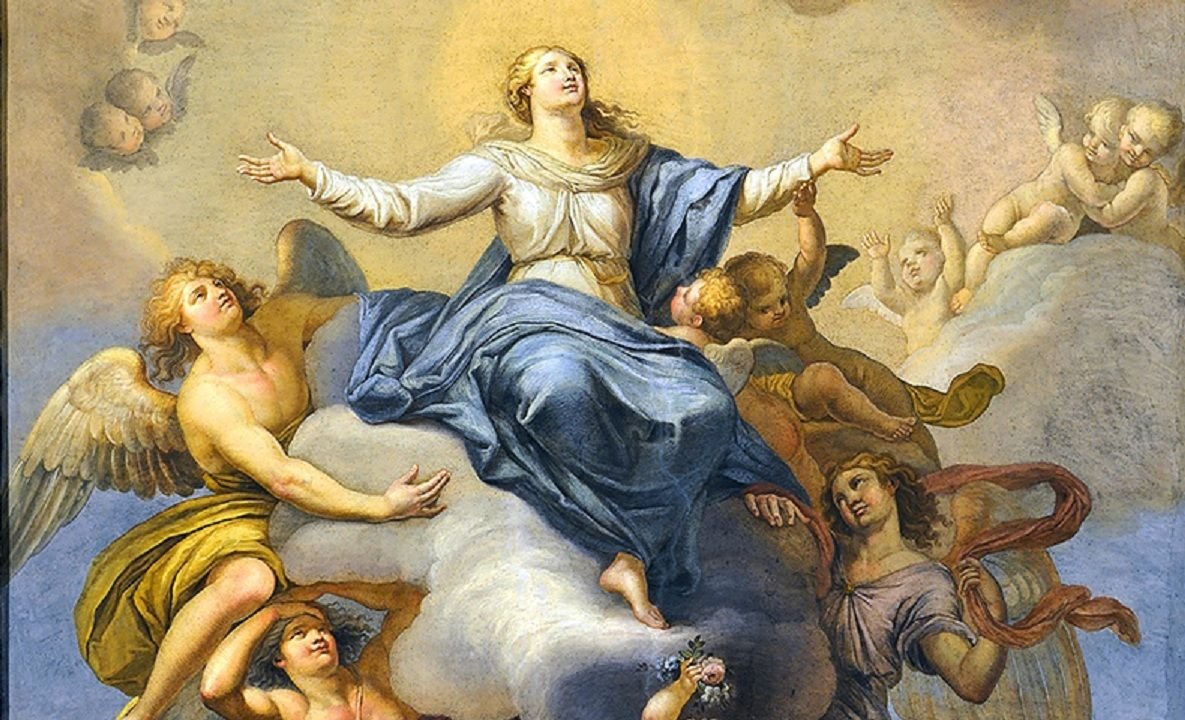
Celebrated every year on August 15, the Feast of the Assumption of the Blessed Virgin Mary commemorates the death of Mary and her bodily assumption into Heaven. The Assumption of the Blessed Virgin Mary into Heaven at the end of her earthly life is a defined dogma of the Catholic Church.
On November 1, 1950, Pope Pius XII defined the Assumption of Mary to be a dogma of faith: “We pronounce, declare and define it to be a divinely revealed dogma that the immaculate Mother of God, the ever Virgin Mary, having completed the course of her earthly life, was assumed body and soul to heavenly glory.” The pope proclaimed this dogma only after a broad consultation of bishops, theologians and laity. There were few dissenting voices. What the pope solemnly declared was already a common belief in the Catholic Church.

The Bible does record God “assuming” both Enoch and Elijah into heaven (Genesis 5:24; 2 Kings 2:11). Therefore, it is not impossible that God would have done the same with Mary. It is not wrong to believe that God “assumed” Mary into heaven. The problem is that there is no biblical basis for the Assumption of Mary. The Bible does not record Mary's death or again mention Mary after Acts chapter 1. Rather, the doctrine of the Assumption is the result of lifting Mary to a position comparable to that of her Son.
We find homilies on the Assumption going back to the sixth century. In following centuries, the Eastern Churches held steadily to the doctrine, but some authors in the West were hesitant. However by the 13th century there was universal agreement. The feast was celebrated under various names–Commemoration, Dormition, Passing, Assumption–from at least the fifth or sixth century. Today it is celebrated as a solemnity.

Some Roman Catholics go so far as to teach that Mary was resurrected on the third day, just like Jesus, and that Mary ascended into heaven, just like Jesus. The New Testament teaches that Jesus was resurrected on the third day (Luke 24:7) and that He ascended bodily into heaven (Acts 1:9). To assume the same thing concerning Mary is to ascribe to her some of the attributes of Christ. While the idea of the Assumption of Mary is not heretical in and of itself; in the Roman Catholic Church, the Assumption of Mary is an important step toward why Mary is venerated, worshipped, adored, and prayed to. To teach the Assumption of Mary is a step toward making her equal to Christ, essentially proclaiming Mary’s deity.
Since Mary is closely associated with all the mysteries of Jesus’ life, it is not surprising that the Holy Spirit has led the Church to believe in Mary’s share in his glorification. So close was she to Jesus on earth, she must be with him body and soul in heaven.



